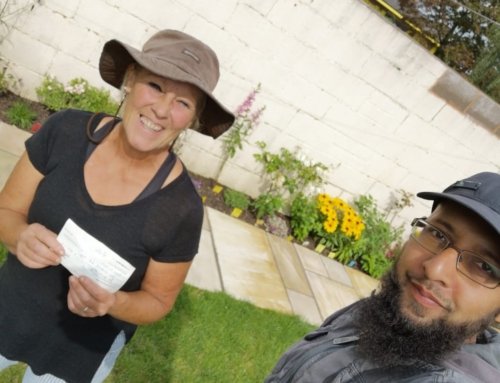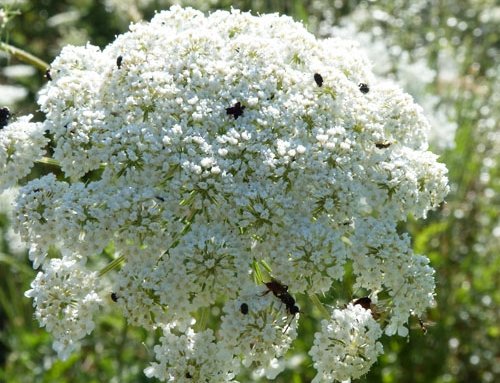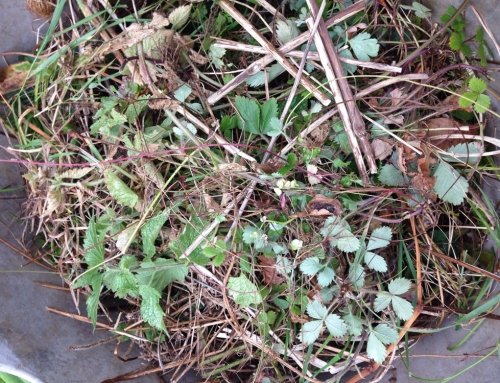At Down to Earth, we’re always interested in innovative growers who take it upon themselves to save seeds that go beyond the mainstream. The fruit and vegetables in our supermarkets have become all the more homogenised, and nutritious food often arrives with 100s of air miles too. As a result, we like to look closer to home – for taste, for health, and for variety.
This time, we interviewed Liam Lansdown of Isotope Chilies, who specialises in unusual and lesser known varieties of chilli and shares seeds with new growers. Check out the interview below:
How did you get into growing chillies?
Liam: [It started] 4-6 yrs ago. I was with my family in Exeter and we went to this chilli festival with loads of chilli products. I’d never really tried hot sauce before, and we tried 10-15 hot sauces. Then I saw there was a guy growing chillies and he had all these plants. They were really lovely, I didn’t know what a chilli plant looked like, and they had dark foliage, and variegated foliage and so on, so I went over to have a look.
I let the idea sit in my mind for about six months, and my dad bought a load of vegetable seeds, and in that pack were some jalapeno seeds which I put on some paper towels and germinated in my airing cupboard, and I was hooked.
Each year I grew more and more varieties, and I’ve got about 50 now.
What is your favourite that most people wouldn’t have heard of?
Liam: My favourite is the ‘ghost jalapeno’ – a cross between a ghost pepper and a jalapeno. It’s quite an unusual combination as they’re both under the capsicum genus but are two different species… One is an annuum and one is a chinense. They don’t typically breed but someone put the time and effort to crossbreed this. It has the vegetal notes of a jalapeno and the ghost pepper burn.
Mmmm… is there any chilli that got you cooking more spicy food?
Liam: Yeah for me that was the lemondrop… it’s a small yellow pepper. I cooked some strawberry jam and added the lemondrop.
Are you making any chilli products in future, or thinking of expanding at all?
Liam: Yes! Last year, I had a big harvest so I dehydrated a lot of the chillies and combined them into a powder which I sent to lots of friends to test which went down well. I’m thinking of making a few more powders this year, but my goal is definitely a hot sauce.
Regards expanding, I think it would be tricky and take too much of my time – but ideally I would love to.
What would you say to someone who wanted to get into growing chillies – especially indoors without a lot of space?
Liam: Many people overcomplicate it. They go into a lot of detail about their compost mix, their starting substrate, and their nutrient levels. It really doesn’t have to be complicated. This is all indoors at the moment. You can grow them to fruit this way.
However, I do have some in a grow tent – an indoor setup. In the winter they will need a grow lamp, you can get a tent and a proper lamp set up, but there are lots of different methods. You can use coconut coir, or just compost. It is really simple.
Some of my favourites that I’ve grown include the peach ghost scorpion a cross between a peach ghost pepper and a ‘Trinidad scorpion’. There’s also the ‘leopard reaper’ – that was interesting, I bought seeds online and one of them came up with dark foliage and it turned out to be a leopard reaper.
Wow! Can you sow them all year round?
Liam: For growing indoors on a windowsill you ideally want to start before June
There are three main capsicum species – there’s capsicum annuum which is fast growing and fruits quickly, capsicum baccatum, which grows on vines and is similar to an annuum, and capsicum chinense – which has smaller plants, which takes longer to grow and produces hotter fruits. Ultimately, it depends on what you want to grow – for mild chillies, right now is the time for an annuum, but if you want really hot peppers it’s best to start in January.
To sum up, we asked Liam for something interesting about chillies that even more experienced growers might not know, and he didn’t disappoint!
“There are loads of wild species, such as in South America. Unlike domesticated chillies, they have multiple flowers! They’re very different from domesticated chillies.”
Final Thoughts
It was amazing talking to Liam and he was incredibly inspiring with his obvious passion and depths of knowledge. His range of chillies is very rare even at an artisan level – he’s gone out of his way to grow some of the more unusual and difficult-to-find varieties, making his work a genuine hidden treasure for anyone who cares about biodiversity in food and seed-saving. You can find his work online at his website below. His range is dependent on availability – but like the dark-leaved leopard reaper, you never know what you might find!
https://www.isotopechillies.co.uk





